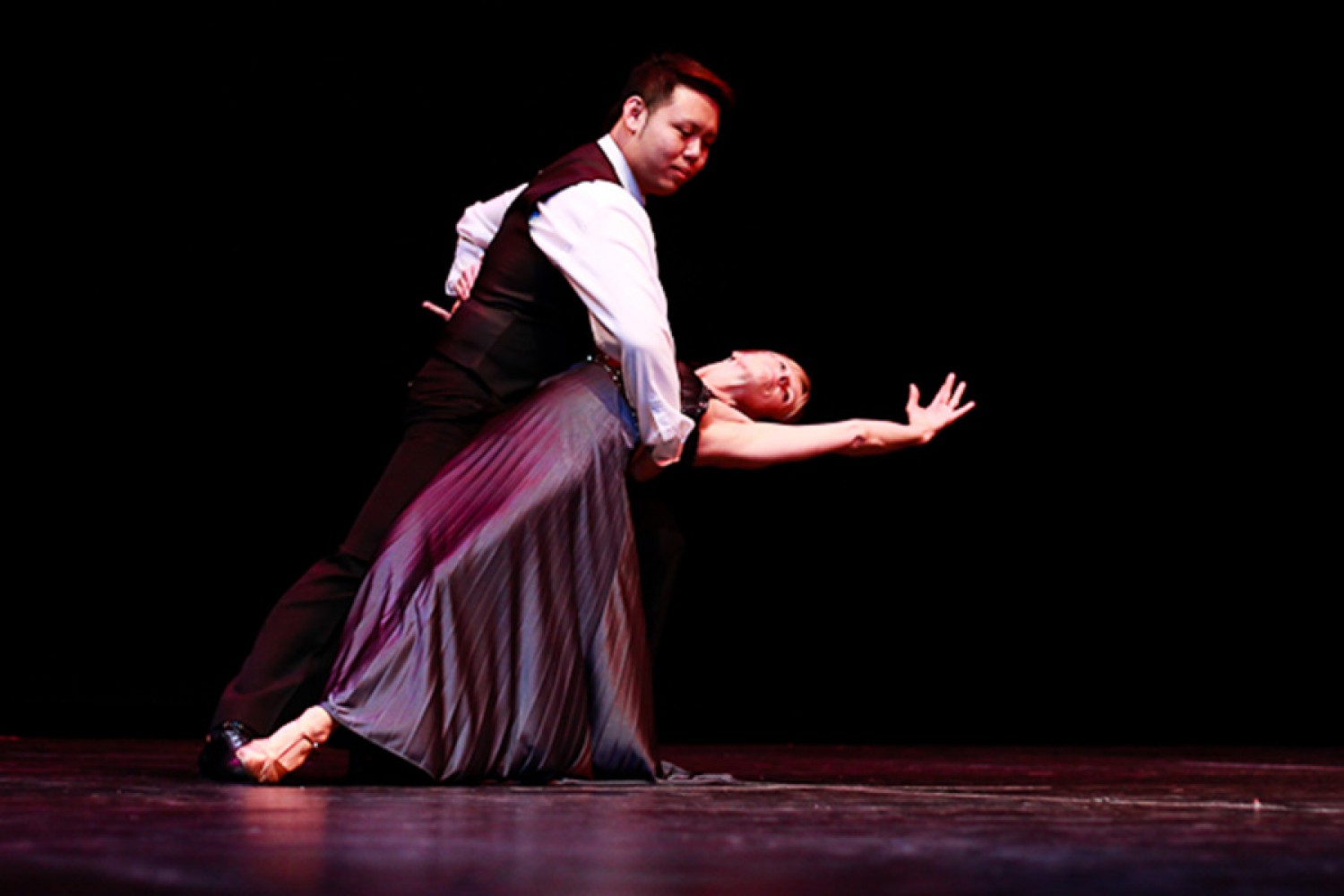The Smooth/Standard ‘Look of a Dancer’

Last time, we tried to quantify the ‘X factor’ that makes certain dancers stand out from the crowd. Now that we know the skill set these exceptional dancers share, we’re ready to look more deeply at how we might learn to acquire it for ourselves. First stop: standard and smooth dances!
Perfect your frame.
Not only does it look good, a light but responsive frame with correct arm placement can instantly transmit your every move to your partner, allowing you to lead and follow more difficult patterns with ease.
Assuming you already know the basics, dance without a partner to strengthen your arms and keep them from dipping downwards. Don’t just focus on the arms, but on the body they’re attached to. Is your spine lengthened? Are you connecting through your centre by softening your knees? Are you opening your ribcage?
Add rise and fall.
Every smooth/standard style except tango uses the rise and fall to create more dimension to your movement; without it, a dance will look flat and lifeless. Check this article for some beginner tips to improving your rise and fall.
More experienced dancers can take their rise and fall to the next level by dancing patterns with turning actions, like the reverse turn in waltz. In particular, try lifting through the crown of the head when you lower, to keep your blocks of weight aligned.
Sway with the music.
Body sway creates powerful shapes as you whirl across the floor, and is crucial for maintaining balance as well. It refers to the dancer’s body angled slightly away from their stepping foot on a rise, which helps control their momentum.
Breaking the sway step down into two parts, sending out the leg and transferring weight, helps you keep a straight line from the stepping foot to the crown of your head. This may feel like the sway step is slightly slower and the next step is slightly faster – and that’s okay!
Play with the music
Dancers with ‘the look’ have learned to respond not just to their partner, but to the music as well. You can attune yourself to music by listening to it wherever you are. Listen for the accents and the pauses, the exciting and the quiet parts.
Then dance the simplest steps you know, and experiment with how you might express what you hear. Play with the speed of the movement, or sharper vs softer steps (click here for more tips on this). In time, you’ll learn the balance between being musical, and maintaining the character of the dance.
There’s other skills that help you master ‘the look’, but they are more the domain of the Latin/rhythm dances. More on that next week.
About the Author
Ian Crewe has been dancing ballroom for over 18 years, and has a Licentiate in American smooth and rhythm. His passion for dance eventually led him to blogging and the World Wide Web. Ian currently teaches at the Joy of Dance Centre, Toronto, ON, Canada.

